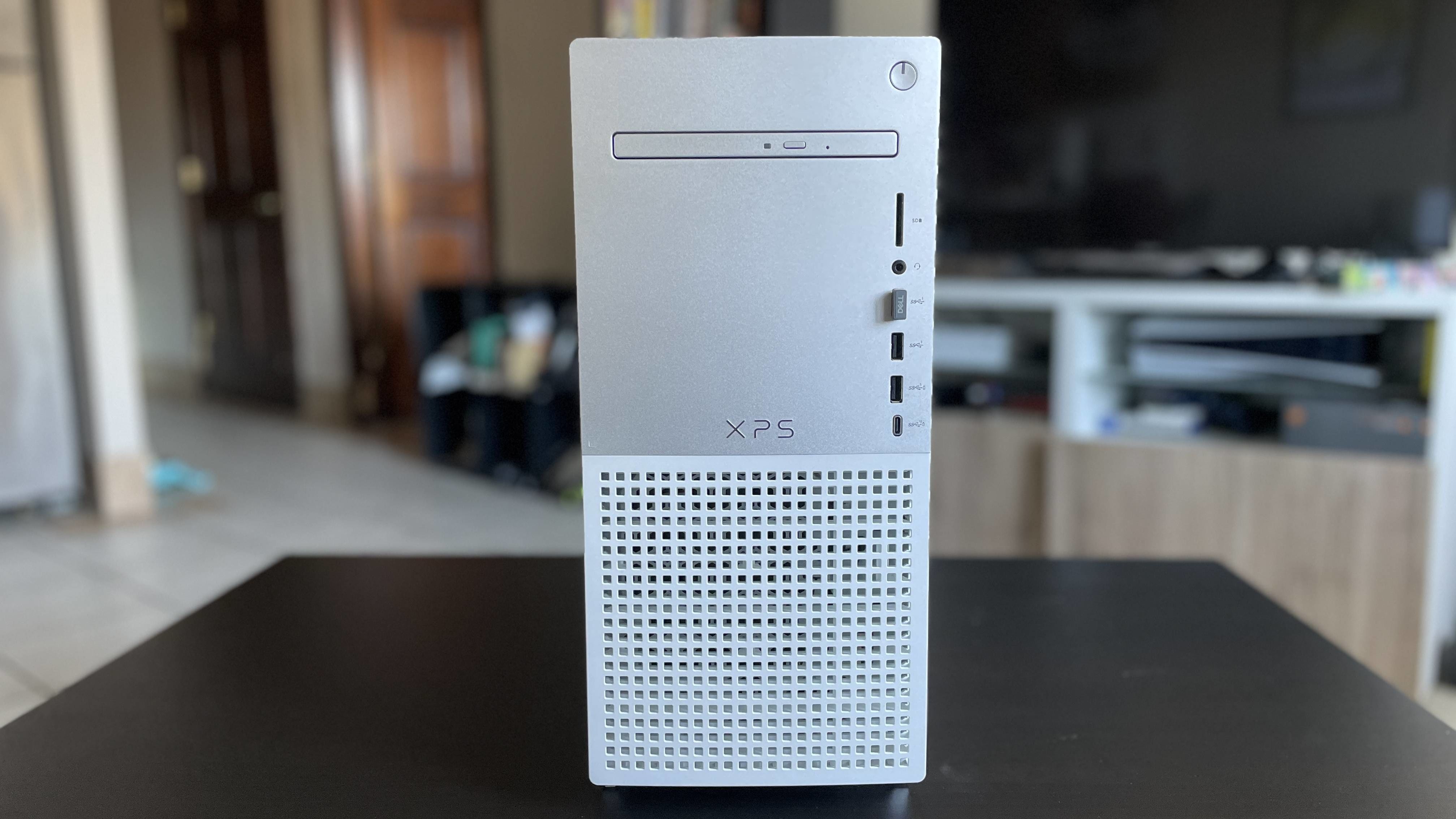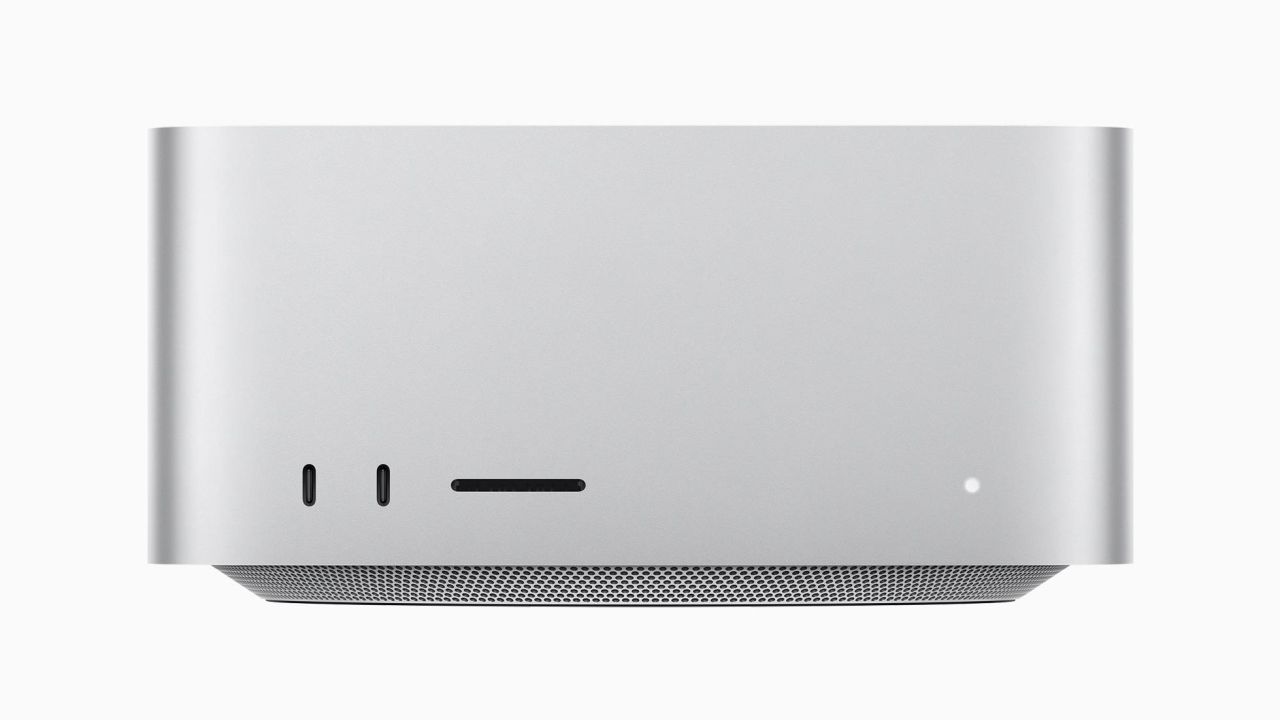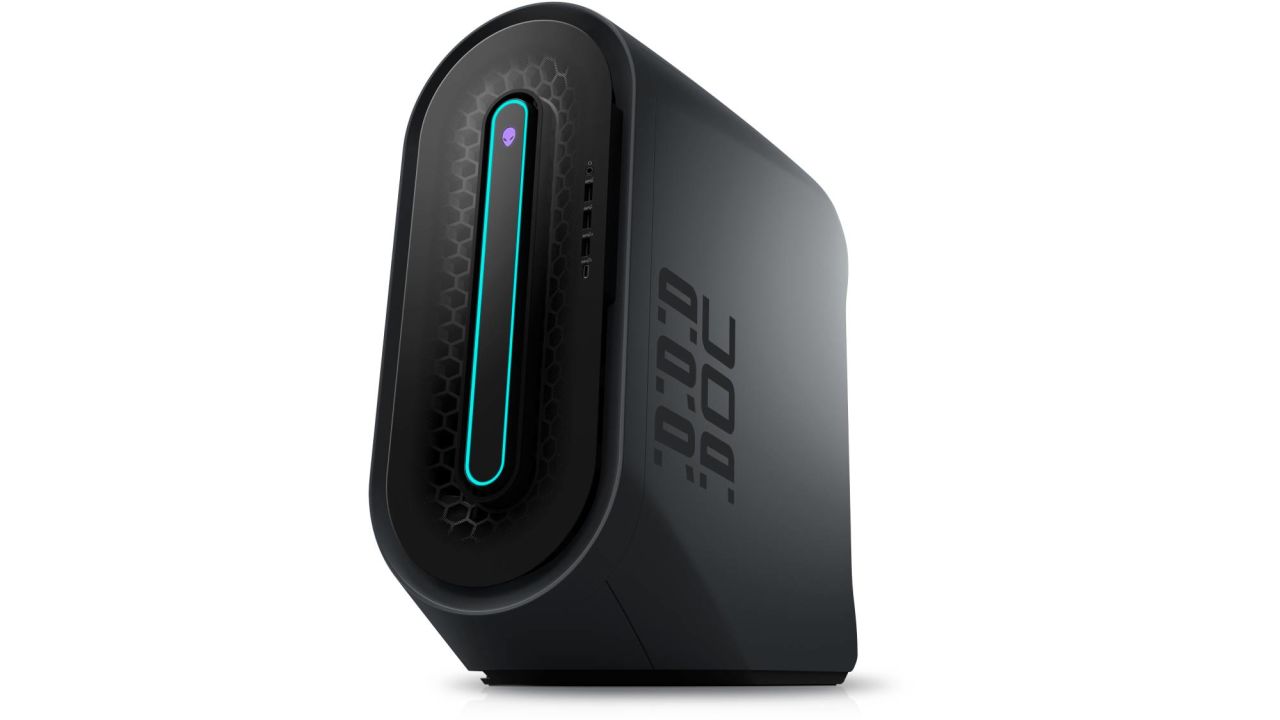Traditional desktop computers still have a lot of value these days, especially at a time when working from home is the norm for many. Compared to a laptop, they can generally be outfitted with added power, and more crucially, can be upgraded with better components over time to keep up with your needs.
The newest Dell XPS Desktop, while not the sexiest or smallest computer, delivers big on these two benefits. It can handle serious creative workloads and immersive 4K gaming, thanks to support for the latest Intel processors and Nvidia and AMD graphics cards. More importantly, you’ll barely have to touch any tools to open it up, meaning even non-techie users will be able to upgrade it should they find themselves needing more storage, memory or graphics muscle.
This all adds up to a great desktop machine for content creators and PC gamers alike, though its bulky (and occasionally loud) design might not be a fit for everyone. Wondering if the XPS Desktop deserves a spot in your home office? Here’s what I think after spending a few days working and playing on it.
What we liked
Lots of ports — and a disc drive!

As someone who’s constantly switching out accessories for both work and play, I appreciate a PC with lots of easily accessible ports, and the XPS Desktop delivers those in spades. Dell’s desktop features three USB 3 Type-A ports, a USB 3 Type-C port, an SD card slot and a headset jack right up front, which allowed me to hook up a mouse, microphone, webcam and a charging cable for my phone without having to reach around to the back of the computer.
Once you do make your way behind the PC, you’ll find a standard selection of ports that includes two USB 3 Type-A ports, two USB 2 Type-A ports, a USB 3 Type-C, an Ethernet jack and a full suite of audio ports for your sound system. Our review unit’s Nvidia GeForce 3060 Ti graphics card packs three DisplayPort connections as well as an HDMI port, giving you plenty of options for connecting to one or more screens.
The Dell XPS Desktop also comes loaded with a disc drive — yes, those still exist. While I don’t know many folks who still rely on physical discs these days, the XPS Desktop’s optional DVD-RW drive could be useful to music producers or video editors who want to have a hard backup of their work. Just note that there’s no Blu-ray option for those who want to play or transfer higher-end video content.
Easy upgradability
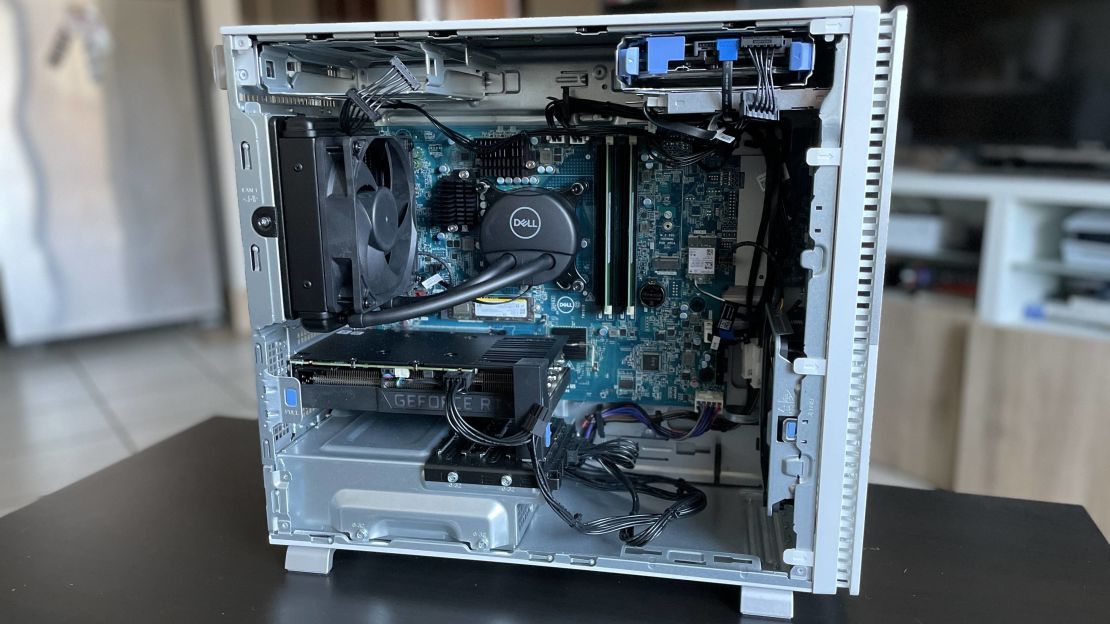
Simple, tool-free upgradability has been a hallmark of Dell’s recent PC towers, and I’m happy to see that remains the case on the latest Dell XPS Desktop. After removing a single thumbscrew in the rear, the desktop’s side panel popped off with a quick pull of a lever, giving me instant, easy access to all of the components inside. You can swap out the system’s graphics card, storage drives and memory without the need for any tools, with just a few screws keeping you from the processor. It’s the same foolproof setup found in Dell’s gaming rigs like the Alienware Aurora R13, and means that you can upgrade your computer with newer, faster components over time without being an expert PC builder.
Great overall performance
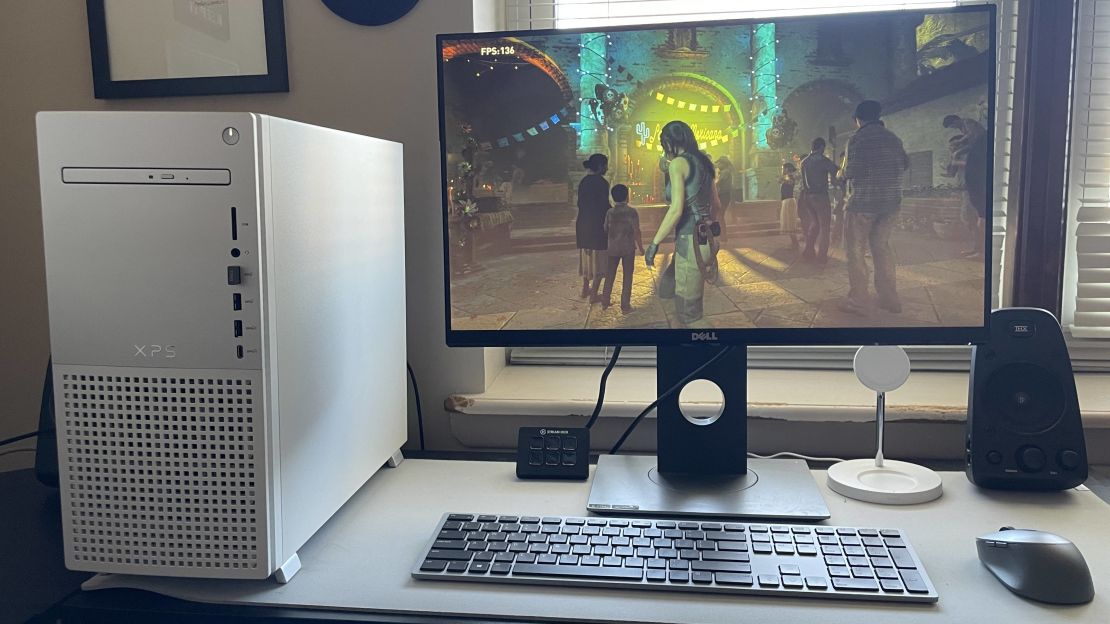
My XPS Desktop unit is far from the most tricked-out PC, but it still managed to provide more than enough power for my daily workload. Bouncing between apps, multitasking between two monitors and opening up countless Chrome tabs felt smooth and instant on Dell’s tower, which came loaded with a 12th Gen Intel Core i5 processor and 16GB of memory.
That smooth everyday performance is largely in line with my personal custom-built desktop and the 14-inch MacBook Pro I use daily. But the XPS Desktop really shined on our benchmark tests, where it proved highly capable of handling visually intensive tasks — and holding up to some very strong competition.
On Geekbench 5, which we run to get a general sense of processing performance, the XPS Desktop turned in a strong 10,861. That’s better than the majority of Windows gaming desktops we tested, and not far behind the Mac Studio and its ridiculously fast M1 Max processor.
|
Dell XPS Desktop
|
Apple Mac Studio
|
Alienware Aurora R13
|
|
|---|---|---|---|
| Processor and graphics | Intel Core i5-12600K, Nvidia RTX 3060 Ti |
Apple M1 Max (32-core) |
Intel Core i7-12700K, Nvidia RTX 3080 |
| Geekbench 5 (multi-core) | 10,861 |
12,792 |
15,272 |
| Shadow of the Tomb Raider (1080p, max settings) | 143 fps |
88 fps |
185 fps |
Dell’s tower also doubles as a reliable gaming PC, thanks to a dedicated Nvidia RTX 3060 Ti graphics card that’s well-equipped to run modern games at 1080p with all the visual bells and whistles cranked up. The XPS Tower was able to run the realistic, cinematic action of Shadow of the Tomb Raider at an average of 143 frames per second (fps), which translates to incredibly smooth gaming and trounces the 88 fps we got from the Mac Studio. Both of those numbers are well above the minimum 60 fps that we consider optimal for a great gaming experience, but the XPS Tower’s added graphics muscle makes it the better machine for playing games — and, in some cases, doing demanding visual work such as 3D rendering.
It’s also worth noting that this impressive performance came from a $1,762 configuration of Dell’s desktop with relatively modest specs. Those who want even more power can configure the machine with up to a blazing Intel Core i9 processor, up to 32GB of RAM, as much as 2TB of hard drive or SSD storage and the top-of-the-line Nvidia RTX 3090 graphics card for hardcore 4K gaming or intensive content creation. Those upgrades can quickly balloon the XPS Desktop’s price to the high $3,000s, but that’s largely in line with what you’ll pay for similarly powerful PCs.
What we didn’t
It’s not the sexiest desktop
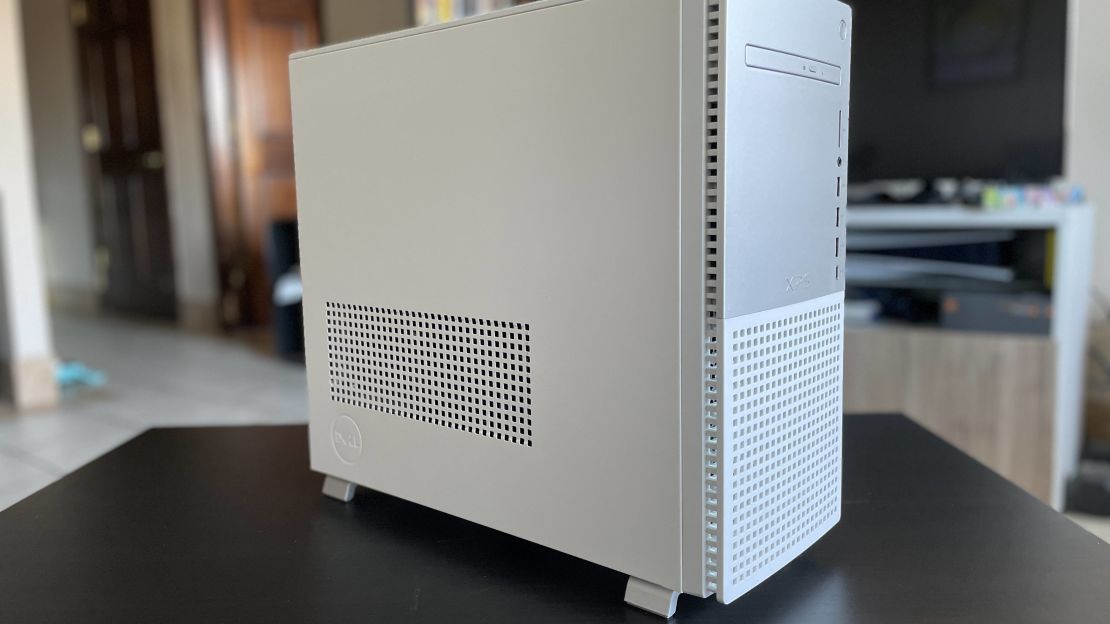
While the XPS Desktop has a certain retro charm that makes me nostalgic for the family PC that sat in my living room a few decades ago, that also makes it clunky-looking by modern desktop standards. Its boxy, perforated silver-and-white design (there’s also a black option) isn’t nearly as egregious-looking as the cheese-grater-esque Mac Pro, but it’s far from the most attractive computer I’ve used recently.
And while the XPS Desktop didn’t eat up too much desk space at 16.8 by 15.4 by 6.8 inches, I was turned off by its size after having just used the Mac Studio, which is similarly powerful and small enough to sneak under my monitor. The PC also weighs a hefty 17 pounds, so lugging it from room to room will take some muscle. Dell made the latest XPS Desktop larger than its predecessor to allow for better airflow, but that also means a bigger chassis that’s not ideal for those tight on space.
The fans can get loud

The larger, more thermally-efficient design allowed the XPS Desktop to stay relatively quiet during everyday multitasking, but Dell’s PC can still get loud under a heavy load. The desktop’s fans became audible when running PC games like Shadow of the Tomb Raider and Dirt 5 — not to the point where it was completely obnoxious, but distracting enough to make me reach for my noise-canceling headphones.
Bottom line
If you’re looking for a Windows desktop that can be outfitted to handle heavy creative workflows and immersive PC gaming alike — and one that can be upgraded with newer parts over time — the Dell XPS Desktop is an excellent choice.
Those who want to live in the Apple ecosystem and are seeking something smaller should check out the Mac Studio, which sacrifices upgradability for a tiny design that barely takes up desk space. There’s also the Corsair One, which is more compact than the XPS but also more expensive, as well as the Alienware Aurora R13, which has the same core specs and features as Dell’s desktop but within a bigger, flashier and gamer-focused design. But if style and space aren’t a concern, Dell’s all-business desktop delivers excellent performance and expandability for the money.
How it compares to other desktops we tested
| Processor | 12th Gen Intel Core i5 / i7 / i9 |
Apple M1 Max or M1 Ultra |
12th Gen Intel Core i5 / i7 / i9 |
|---|---|---|---|
| Memory | Up to 128GB |
Up to 128GB |
Up to 128GB |
| Storage | Up to 2TB SSD, up to 2TB hard drive |
Up to 8TB |
Up to 2TB SSD, up to 2TB hard drive |
| Graphics | Up to Nvidia GeForce RTX 3090 or AMD Radeon RX 6900 XT |
Apple M1 Max or M1 Ultra |
Up to Nvidia GeForce RTX 3090 or AMD Radeon RX 6900 XT |
| Dimensions | 15.4 x 14.7 x 6.81 inches |
7.7 x 7.7 x 3.7 inches |
23.2 x 20.8 x 20.1 inches |
| Weight | 16.36 pounds |
7.9 pounds |
36.4 pounds |
| User-upgradable | Yes |
No |
Yes |
| Disc drive | Yes (DVD-RW) |
No |
No |
| Price | From $1,107 | From $1,999 | From $1,371 |

